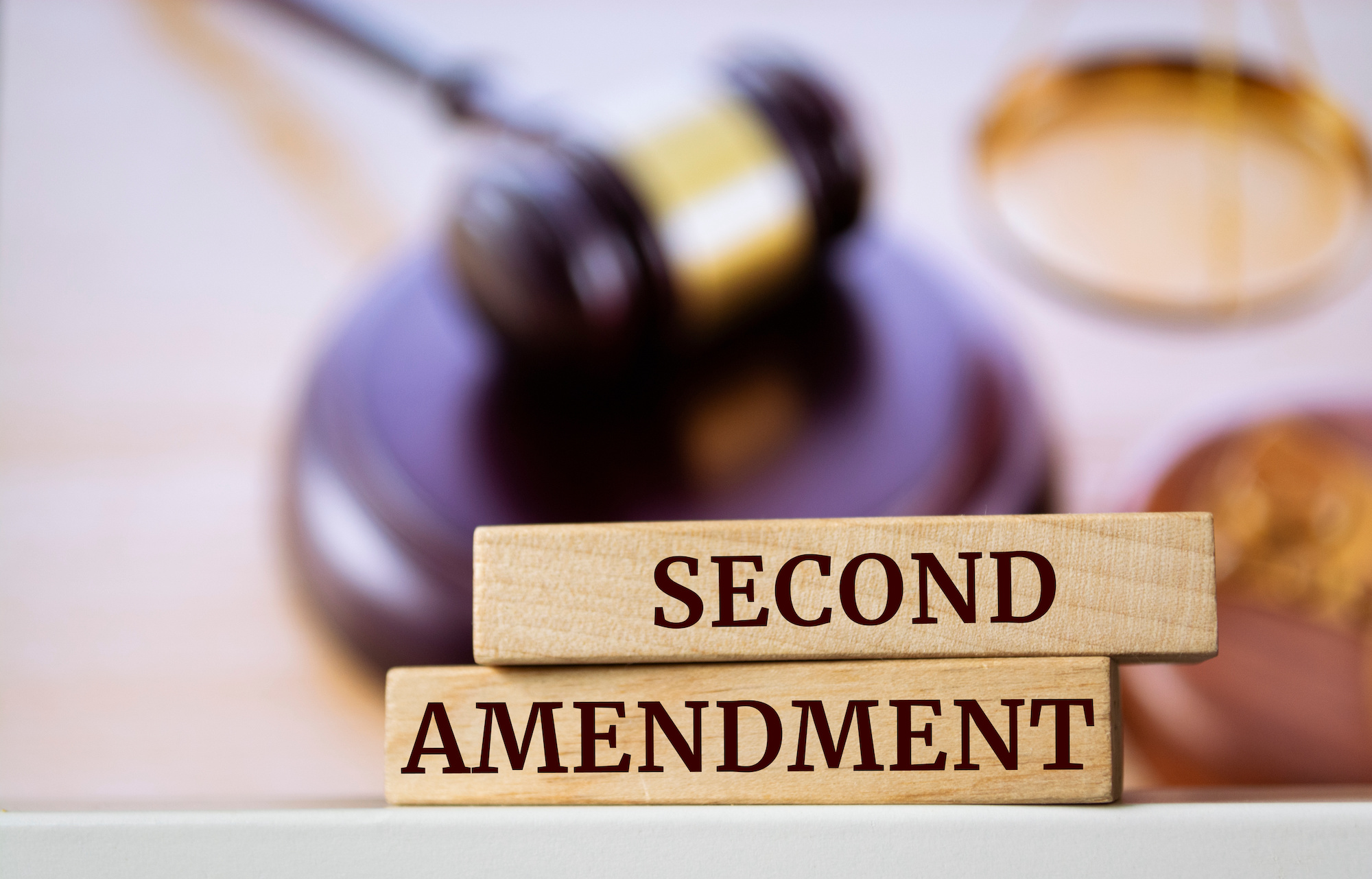

The Ultimate Guide to Protecting Your Second Amendment Rights
The Second Amendment. A cornerstone of American liberty, yet a subject shrouded in complexity and often-misunderstood nuances. This isn’t a political treatise, but a practical guide for navigating the legal landscape and safeguarding your right to keep and bear arms responsibly.
Understanding the Nuances: It’s More Than Just “Shall Not Be Infringed”
The Second Amendment’s brevity belies its intricate legal interpretation. Supreme Court rulings, state laws, and local ordinances create a patchwork quilt of regulations that vary significantly across the country. Understanding these differences is crucial to responsible gun ownership.
Key Legal Precedents: Shaping the Landscape
Landmark cases like *District of Columbia v. Heller* (2008) and *McDonald v. City of Chicago* (2010) established the individual right to bear arms, but also acknowledged the government’s power to regulate firearm ownership. These rulings, however, didn’t create a uniform national standard. Therefore, understanding the specific laws where you live is paramount.
Navigating the Legal Maze: State-by-State Variations
The beauty and the beast of the Second Amendment lie in its decentralized nature. Each state interprets and enacts its own regulations. This section provides a framework for understanding those variations. Remember to always consult your state’s specific laws and statutes.
| State Category | Key Characteristics | Example Regulations |
|---|---|---|
| Shall-Issue States | Relatively easy to obtain a concealed carry permit. | Minimal background checks, training requirements. |
| May-Issue States | More stringent permit requirements, often requiring “good cause” demonstration. | Extensive background checks, extensive training, proof of need. |
| No-Issue States | Concealed carry permits are generally not issued. | Strict limitations on carrying firearms. |
This table provides a simplified overview. The specific regulations within each category can differ substantially.
Responsible Gun Ownership: Beyond the Legal Aspects
Protecting your Second Amendment rights extends beyond simply knowing the law. Responsible gun ownership involves a commitment to safety, training, and community engagement.
Safe Storage and Handling: Prioritizing Safety
Secure storage is not just a legal obligation in many jurisdictions; it’s a moral imperative. Proper gun safes, trigger locks, and responsible ammunition storage are crucial to preventing accidents and theft.
Training and Education: Mastering Firearm Safety
Competent firearm handling is non-negotiable. Invest in professional training courses that cover safe handling, marksmanship, and relevant legal considerations. Continuous learning is key to responsible gun ownership.
Community Engagement: Advocating for Your Rights
Stay informed about proposed legislation affecting gun rights. Engage with responsible gun rights organizations and participate in constructive dialogue to advocate for responsible gun ownership and the preservation of the Second Amendment.
Staying Informed: Resources and Further Exploration
The legal landscape surrounding firearm ownership is constantly evolving. Staying informed is crucial. Here are some valuable resources:
- Your State’s Attorney General’s Office: Provides access to state-specific laws and regulations.
- National Rifle Association (NRA): Offers educational resources and advocates for gun rights. (Note: This is one perspective; seeking diverse opinions is recommended).
- Giffords Law Center: Advocates for gun safety legislation. (Note: This is a counterpoint; seeking diverse opinions is recommended).
- Local Law Enforcement: Your local police department can provide information on local ordinances and safe gun handling practices.
Conclusion: A Continuing Dialogue
Protecting your Second Amendment rights is an ongoing process, requiring vigilance, responsibility, and informed engagement. By understanding the legal framework, prioritizing safety, and participating in informed discussions, you can effectively safeguard your rights while contributing to a safer community.
Disclaimer: This guide provides general information and should not be considered legal advice. Always consult with a legal professional for advice tailored to your specific circumstances.

Additional Information
Deep Dive into Protecting Second Amendment Rights: An Analytical Extension
The “Ultimate Guide to Protecting Your Second Amendment Rights” (assumed title), while providing a foundational understanding, can be significantly enhanced with deeper analysis across several key areas. This extension focuses on enriching the core content with detailed legal interpretations, practical strategies, and nuanced perspectives.
I. Beyond the Basics: Understanding the Scope of “Shall Not Be Infringed”
The Second Amendment’s phrasing, “the right of the people to keep and bear Arms, shall not be infringed,” is deceptively simple. Its interpretation has been a source of ongoing legal and political debate. The Guide should delve deeper into:
-
Individual vs. Collective Rights: The Supreme Court’s rulings in District of Columbia v. Heller (2008) and McDonald v. City of Chicago (2010) established an individual right to bear arms, but the extent of this right remains contested. The Guide should analyze these landmark cases, examining dissenting opinions and highlighting the ongoing debate on the scope of individual vs. collective interpretations. For instance, the “militia” clause continues to be debated, requiring careful analysis of its historical context and present-day implications.
-
Levels of Scrutiny: Court challenges to gun control legislation often involve different levels of judicial review (strict scrutiny, intermediate scrutiny, rational basis review). The Guide needs to explain these frameworks and illustrate how they affect the outcome of gun control lawsuits. Examples of cases showcasing each level of scrutiny would strengthen this section.
-
The Right to Bear Arms and its Limitations: While the Second Amendment protects the right to bear arms, this right is not absolute. The Guide must meticulously analyze legally permissible restrictions, such as background checks, waiting periods, bans on certain types of weapons (e.g., machine guns, assault rifles), and restrictions on carrying firearms in sensitive places (schools, government buildings). Statistics on the effectiveness (or lack thereof) of these restrictions, alongside analyses of relevant case law, should be included.
II. Navigating the Legal Landscape: Practical Strategies and Case Studies
The Guide needs to move beyond theoretical discussions and provide practical, actionable strategies:
-
Understanding State and Local Laws: Gun laws vary significantly across states and even localities. The Guide should emphasize the importance of knowing and complying with all applicable state and local laws. A state-by-state comparison chart outlining key regulations would be invaluable.
-
Navigating Background Checks: The Guide should offer a detailed breakdown of the National Instant Criminal Background Check System (NICS) process, including common reasons for denial and strategies for addressing potential issues. Statistics on NICS denials and their causes should be presented to illustrate the system’s effectiveness and potential challenges.
-
Case Studies of Successful (and Unsuccessful) Second Amendment Litigation: Analyzing specific court cases provides invaluable insights into the strategies employed, legal arguments used, and the outcomes achieved. The Guide should include case studies that showcase both successful challenges to gun control legislation and instances where such challenges were unsuccessful, highlighting the critical factors influencing each outcome.
-
Self-Defense and the Use of Force: The Guide needs to address the complexities of self-defense laws, emphasizing the importance of understanding the legal parameters surrounding the use of lethal force. This section should include a discussion on the “stand your ground” laws, highlighting their variability across states and their legal implications.
III. The Ethical and Societal Implications:
A comprehensive guide must also acknowledge the broader societal context:
-
Gun Violence Statistics and Research: Presenting unbiased statistics on gun violence, including rates of suicides, homicides, and accidental deaths related to firearms, is crucial. The Guide should carefully analyze the existing research on the link between gun availability and violence, acknowledging the complexities and limitations of such research.
-
Mental Health and Gun Ownership: The intersection of mental health and gun ownership is a sensitive but critical issue. The guide should discuss responsible gun ownership in relation to mental health, emphasizing the importance of seeking professional help and adhering to relevant laws and regulations.
-
Responsible Gun Ownership Practices: This section should offer practical advice on safe gun storage, handling, and training, promoting a culture of responsible gun ownership.
By expanding on these points, the “Ultimate Guide to Protecting Your Second Amendment Rights” can become a truly valuable resource, offering not just a basic overview but a deep and nuanced understanding of the complex legal, ethical, and societal issues surrounding the Second Amendment. The addition of specific examples, case studies, and relevant statistics will significantly enhance its credibility and practical utility.




